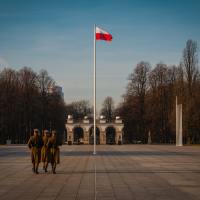
Jyrki Katainen, Vice-President of the European Commission in charge of Jobs, Growth, Investment and Competitiveness (on the left) went to Beijing and was received by the Chinese Premier of the State Council Li Keqiang (on the right). Katainen traveled to Beijing to participate in the EU/China High Level Economic and Trade Dialogue, together with Günther Oettinger, Member of the Commission in charge of Digital Economy and Society, and Violeta Bulc, Member of the EC in charge of Transport. Jyrki Katainen and Ma Kai, Chinese Vice-Premier, then gave a joint press conference. (EC Audiovisual Services, 28/09/2015, Location: Beijing – Zhongnanhai).
China is the first non-EU country to contribute to the Juncker Commission’s €315 billion Investment Plan. Until today only nine out of the 28 EU countries have announced their participation in this major project aimed at reviving the sluggish European economy. Beijing has not yet specified the amount to be invested in the Plan but it is expected to be in the regions of euro billion. The nine EU Member States which have to date confirmed their contribution are Germany (€8 billion), Spain (€1.5bn), France (€8bn), Italy (€8bn), Luxembourg (€80 million), Poland (€8bn), Slovakia (€400 million), Bulgaria (€100 million) and Britain (£6bn/ €8.5bn).
The announcement was made last Monday 28 September at the highest level by the Chinese Vice-Premier Ma Kai. The Chinese dignitary and the Commission Vice-President Jyrki Katainen participated at the High Level Economic and Trade Dialogue (HLM) in Beijing. On the same occasion the two sides signed a Memorandum of Understanding on the “EU-China Connectivity Platform to enhance synergies between China’s “One Belt One Road” initiative and the EU’s connectivity initiatives such as the Trans-European Transport Network policy”.
Addressing imbalances
The HLM is a Chinese initiative, and was agreed at the November 2007 Summit by the then EU Commission President José Manuel Barroso and the then Chinese Premier Wen Jiabao, in order to address the imbalance in trade flows between the EU and China. The Dialog procedure was conceived to examine strategic bilateral trade and investment related issues, innovation, technology and intellectual property and of course the broad EU-China economic cooperation.
The mechanism has functioned as a complement and reinforcement to the otherwise established EU-China dialogues. This is a time-honored bilateral trade and investment mechanism having been used successfully to promote and clarify related issues between the two sides. This time it will be used to connect three major sources of investment finance. It will comprise China’s Silk Road Fund, the Commission’s €315bn Plan and the European Investment Bank (EIB). A joint working group will be set up to boost cooperation between the EU and China on all aspects of investment.
Creating irrevocable ties
Obviously, the common aim is to interconnect the two major investment initiatives of EU and China, namely the €315bn Investment Plan and the Silk Road Fund. Reportedly, some major infrastructure projects can serve both sides and can be co-financed. That’s why EU and China agreed ‘to promote connectivity’ between their major initiatives, in order to facilitate the projects that can be financed and realized in common.
This was visible in the text of the Press release issued last Monday after the Dialog in Beijin. It says “the two sides agreed to set up a joint working group to increase cooperation between the EU and China on all aspects of investment. The working group will include experts from China’s Silk Road Fund, the Commission, and the European Investment Bank (EIB)”.
Planning also for the 5G
After Monday’s Dialog the EU-China cooperation in investment projects of common interest has been greatly enhanced. In Beijing, Vice-President Katainen was joined by Günther Oettinger, European Commissioner in charge of Digital Economy and Society, who concluded a new agreement on 5G. EU Commissioner for Transport Violeta Bulc also participated in the Beijing Dialog and held talks on transport infrastructure investment cooperation.
As things stand now the EU and China are clearly stating their willingness to interconnect their major infrastructure investment initiatives. The connectivity will be sought in both the financial aspect of the projects and their actual construction. The financial side will be served under China’s Silk Road Fund, EU’s €315 billion Investment Plan and the EIB. To this effect, Monday’s agreements have now linked their available financial schemes. On the actual construction facet the two sides have interconnected the platforms on which those major projects are to be realized. This last binding will be achieved by linking the ‘One Belt One Road’ initiative and the ‘Trans-European Transport Network’ policy.
Declaring their intentions in earnest
At first reading all the above mentioned initiatives and the grandiose projects to be undertaken in common are still in the sphere of wishful thinking. The truth is however that the two sides have both the financial resources and the expertise to plan and realize such giant infrastructure investment ventures. Now the EU and China state their willingness to realize the schemes in question and irrevocably bind two major economies of the world. Such a prospect even at the moment of its very first announcement as a declaration of intentions plays a key geostrategic role and comes at a moment when the political geography of the planet is redrawn.



















Leave a Reply